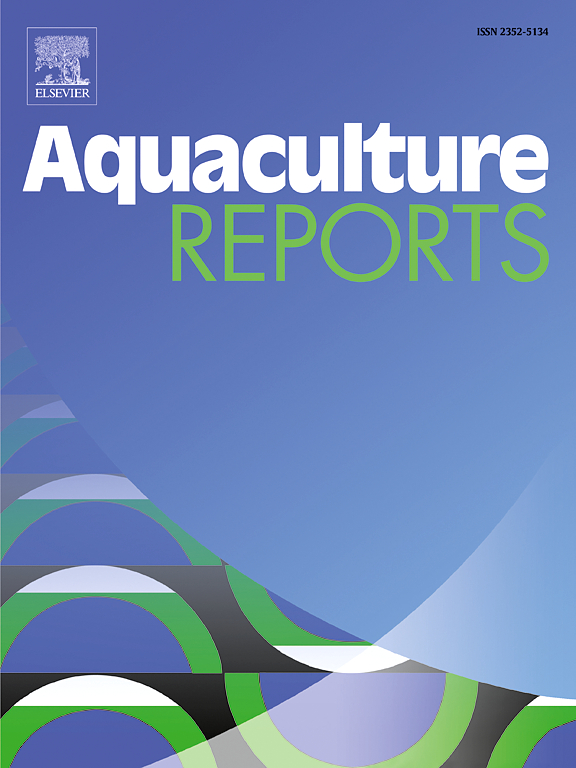基于克氏原螯虾基因组重测序和PCR扩增的简单快速性别鉴定方法
IF 3.2
2区 农林科学
Q1 FISHERIES
引用次数: 0
摘要
克氏原螯虾(Procambarus clarkii)是中国珍贵的商业水生物种。像许多商业甲壳类动物一样,克拉氏p.c larkii表现出明显的性别二态性,在相同体重的情况下,雌性比雄性含有更多的肉。高通量测序技术产生的基因组数据为多种水生动物性别特异性标记的开发和应用提供了重要信息。本研究对来自重庆智胜ZS种群的雌雄克拉氏疟原虫各15个个体进行了全基因组重测序。女性和男性样本的总清洁数据分别为74.23 Gb和71.43 Gb。迄今为止,根据我们的分析结果,共设计了187条用于开发性别特异性标记的引物,其中3条引物经PCR扩增后显示出男性特异性条带。进一步验证表明,这3个位于LG38上的性别特异性标记能够有效区分克拉氏疟原虫的雌雄,在5个地理区域的性别歧视率为98.8 % ~ 100% %。这种基于PCR扩增的性别特异性标记开发方法不仅高效、简单,而且为基于下一代测序数据扩展到其他甲壳类物种提供了有益的参考。本研究鉴定的标记可用于克氏假单胞菌养殖业通过性别控制育种提高产量。本文章由计算机程序翻译,如有差异,请以英文原文为准。
Genome re-sequencing and PCR amplification based simple and rapid sexing method for Procambarus clarkii
Procambarus clarkii is a valuable commercial aquatic species in China. Like many commercial crustaceans, P. clarkii exhibits significant sex dimorphism, with females containing more flesh than males of the same weight. The genomic data generated by high-throughput sequencing technology provides crucial information for the development and application of sex-specific markers in a multitude of aquatic animals. In this study, whole genome re-sequencing was performed on 15 individuals each of female and male P. clarkii from the ZS population (sampled from Zhisheng, Chongqing). The total clean data from the female and male samples were 74.23 Gb and 71.43 Gb, respectively. Thus far, according to our analysis results, 187 primers have been designed for developing sex-specific markers, and three of them showed exclusively male-specific bands by PCR amplification. Further validation showed that these three sex-specific markers located on LG38 could effectively distinguish between male and female P. clarkii, with a sex discrimination rate ranging from 98.8 % to 100 % in five geographical regions. This PCR amplification-based approach to developing sex-specific markers is not only efficient and simple, but also serves as a useful reference that can be extended to other crustacean species based on next-generation sequencing data. The markers identified in this study may be useful for increasing yield through sex-control breeding in the P. clarkii aquaculture industry.
求助全文
通过发布文献求助,成功后即可免费获取论文全文。
去求助
来源期刊

Aquaculture Reports
Agricultural and Biological Sciences-Animal Science and Zoology
CiteScore
5.90
自引率
8.10%
发文量
469
审稿时长
77 days
期刊介绍:
Aquaculture Reports will publish original research papers and reviews documenting outstanding science with a regional context and focus, answering the need for high quality information on novel species, systems and regions in emerging areas of aquaculture research and development, such as integrated multi-trophic aquaculture, urban aquaculture, ornamental, unfed aquaculture, offshore aquaculture and others. Papers having industry research as priority and encompassing product development research or current industry practice are encouraged.
 求助内容:
求助内容: 应助结果提醒方式:
应助结果提醒方式:


